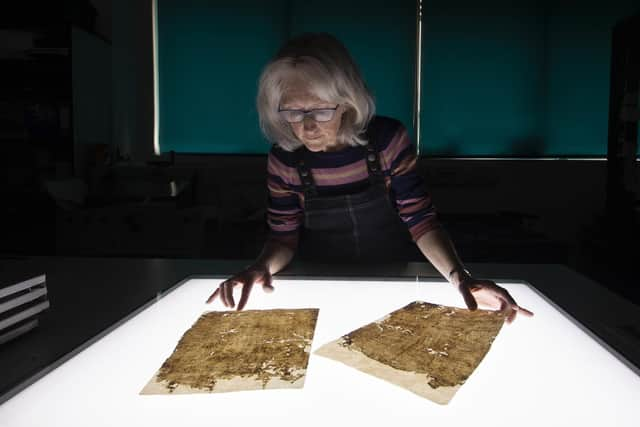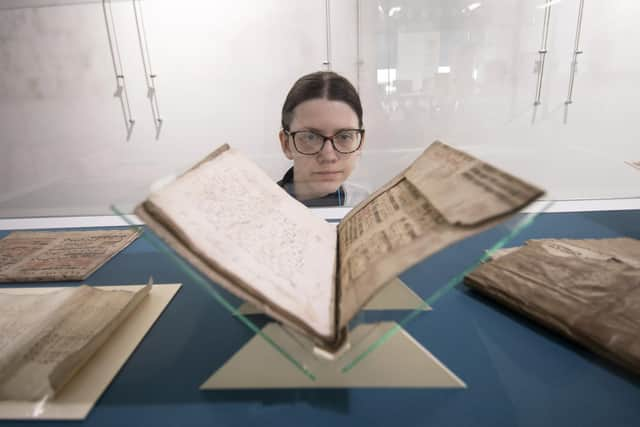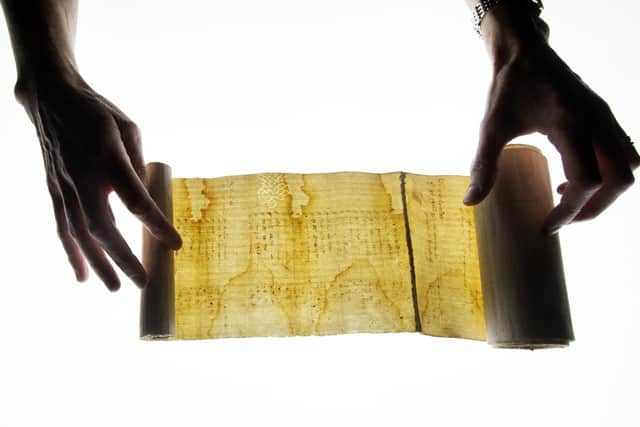'Oldest document in whole of Yorkshire' Fountains Abbey Charter on display in exhibition of historic medieval records
Yet the Fountains Abbey Charter of 1138 is a remarkable document. It marks the foundation of the abbey near Ripon, North Yorkshire, the ruins of which today form part of a popular visitor attraction and World Heritage Site.
It is also the oldest document held in the vast collections of West Yorkshire Archive Service (WYAS).
Advertisement
Hide AdAdvertisement
Hide Ad“In fact, we think it might be the oldest document that survives in the whole of Yorkshire,” enthuses Anna Carter, an audience engagement and learning coordinator with the service.


“It’s a modest, unassuming piece of parchment. It’s quite small, about a third of the size of a piece of A4 paper…But it’s really incredible.”
The document is one of a selection of medieval records cared for by WYAS that is on display as part of an exhibition exploring the medieval period.
Featuring items that are between 538 and 885-years-old, Medieval Magnified takes a close-up look at documents from the period, exploring the stories of how and why they were created, the journeys that brought them to West Yorkshire and the calligraphy, seals, inks and materials that make them so special.
Advertisement
Hide AdAdvertisement
Hide Ad“When you slow down and look at them, you start to appreciate the incredible craftsmanship that is involved in how they were created. For example, a lot of them are written on parchment which was made of animal skin and that was prepared over a number of weeks before it could be used as a medium to take ink.


“In some cases when you look up close under the microscope you can see the shadows of the hair follicles - all the hair and fur was removed so they could be used as a sort of paper. It’s fascinating.
“Some of the documents have incredibly detailed and quite colourful illustrations. We’ve focused on the types of pigments that were used and considering some of them are over 800-years-old, you can still see these bright pigments - bright blues and reds. Some of them have gold detailing, through gold leaf.
“They would have all been drawn by hand…using a feather quill and probably in candlelight.”
Advertisement
Hide AdAdvertisement
Hide AdWYAS collects and looks after the documentary heritage of the region, across its offices in Bradford, Calderdale, Kirklees, Leeds and Wakefield. Its collections date from the 12th century to the present day and can be used to find out about local history, family history and the heritage of specific buildings.


Archives are stored in strongrooms. Environmental and temperature controls and protective packaging are among the techniques used to preserve them for future generations..
“What’s quite interesting about a lot of the medieval documents is that they’re on parchment…and parchment is actually a really stable medium and quite easy to look after,” Anna says. “That’s why some of them are in such incredible condition. Sometimes some of the older documents we care for are easier to look after than some of the newer more modern papers which tend to degrade more easily.”
Still, it’s no mean feat. These are precious items that have survived through wars, natural disasters and periods of enormous change. Some have been treasured since their creation, prized for their beauty and importance. Others appear humble or have survived purely by chance. A piece of medieval music, for example, was hidden in the bindings of a book for centuries until being rediscovered.
Advertisement
Hide AdAdvertisement
Hide AdAmong the items on display is a papal bull from Pope Gregory X, giving permission for a couple to marry. There’s a charter that documents the foundation of Mount Grace Priory near Northallerton in 1398; a book of documents relating to Whitby Abbey; and a fascinating tax roll for the Wapentake of Osgoldcross from 1472.
“A lot of our really early records are from quite large family estates,” explains Anna. “Many of those documents come from areas around Ripon. That used to be part of the old West Riding - it’s obviously now North Yorkshire, but we’ve owned some of those collections for decades and decades, long before the boundaries changed.”
“It will be nice to bring these documents to a wider audience, because they’ve not been on display before,” Anna adds. “Sometimes the older documents can be a bit overlooked within our collections.
“The whole idea of the exhibition is to highlight these documents really without a requirement to know much, if anything, about the medieval period or to be able to read Latin. There’s a rich history available for people to come and have a look at.”
Medieval Magnified is on display at West Yorkshire History Centre in Wakefield until spring 2024.
